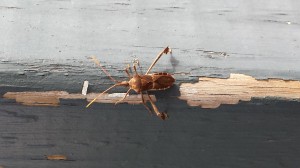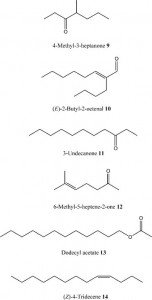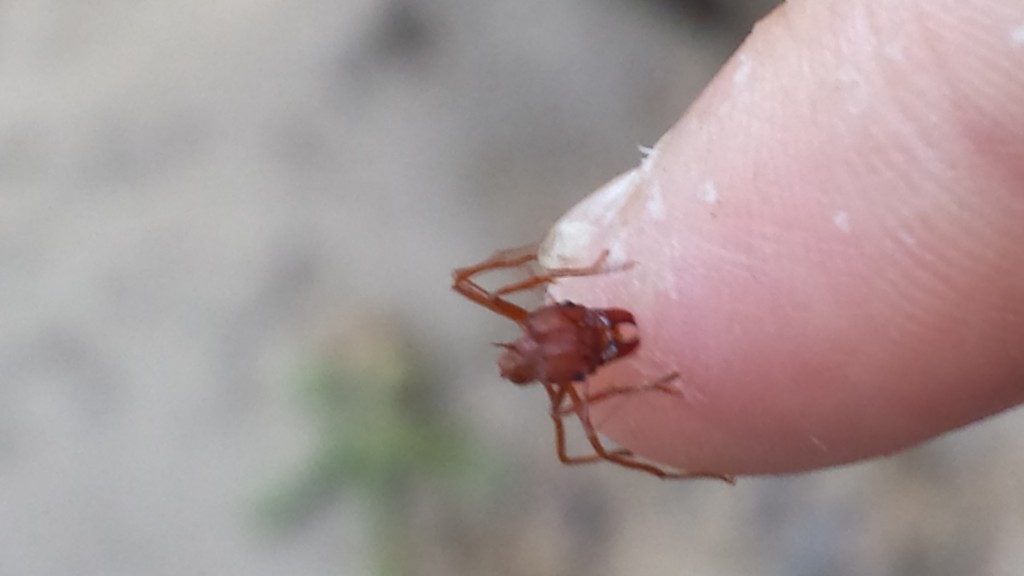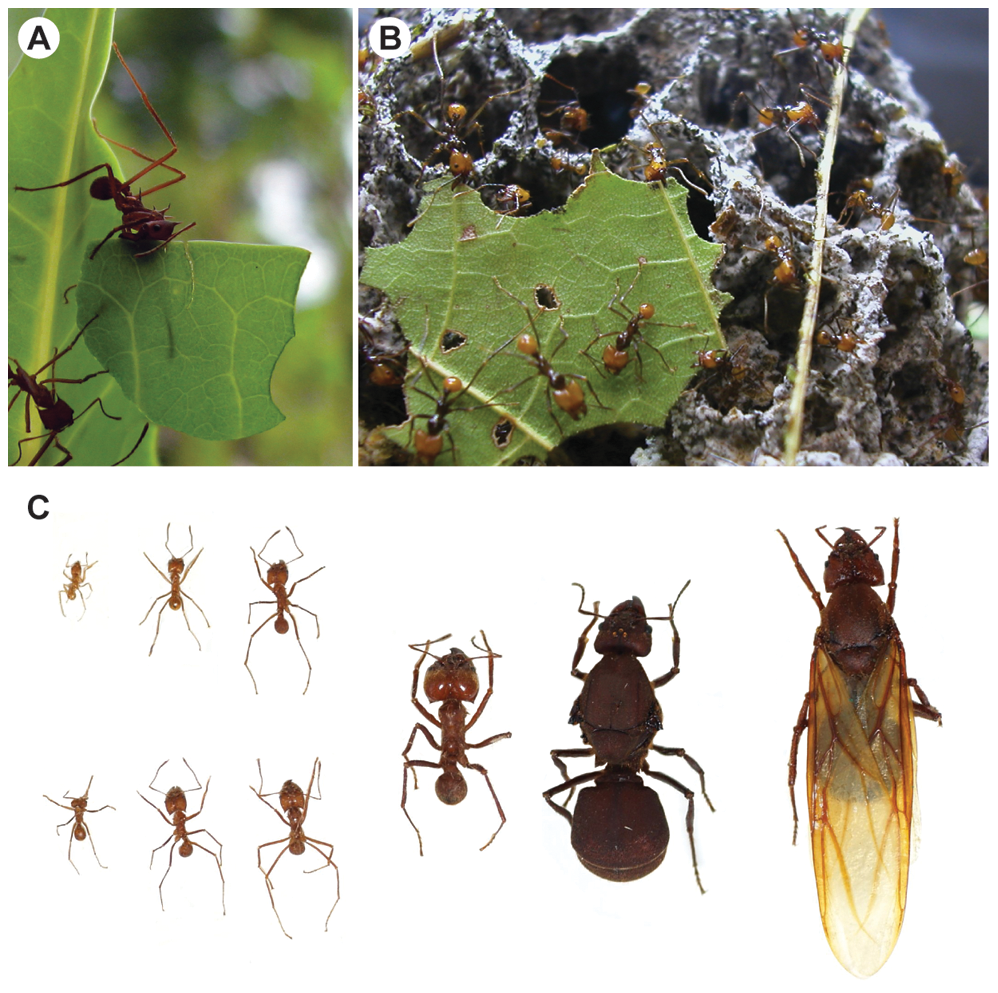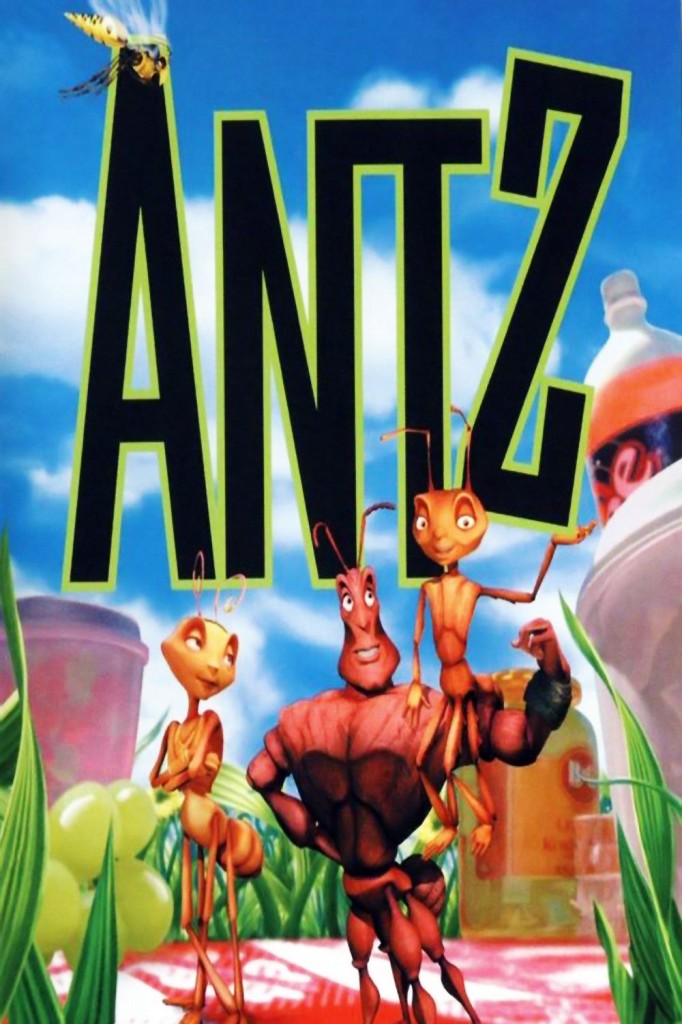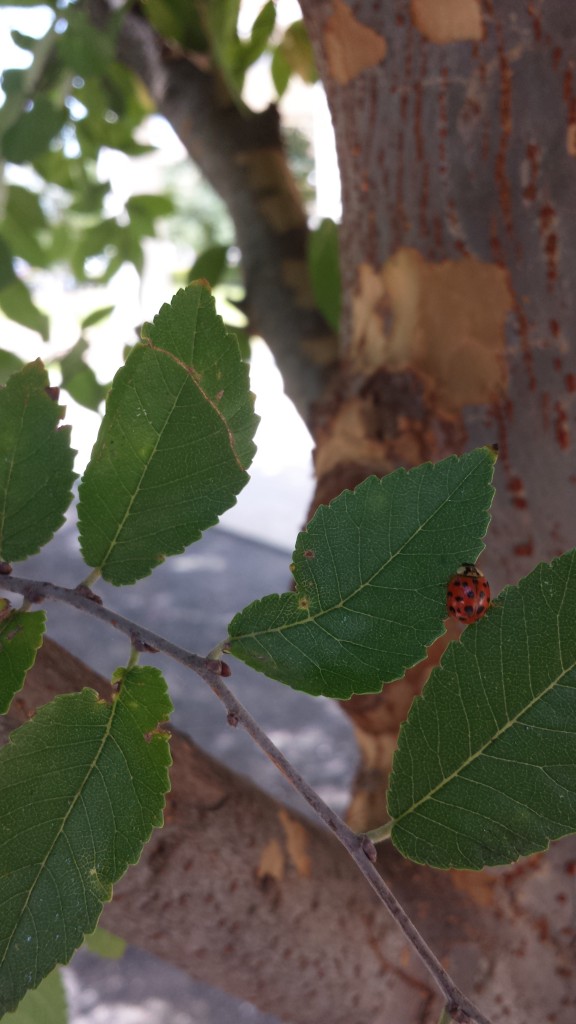On Thanksgiving Day, I was playing outside with my cousins when one of them noticed a cool looking bug crawling on the side of the house. I rushed on over to examine it, and noticed that it was in fact a true bug (order Hemiptera, suborder Heteroptera), and recognized it as a stink bug. I did not agitate this bug to test this hypothesis, but from my experience I believe it to be the case (it is always possible that it was a mimic). It is generally safe to assume that if you live in a wooded area, you have run across stink bugs at some point. It is just as safe to assume that if you have run across a stink bug and have made the mistake of picking it up (since it is pretty cool looking after all), you can imagine the horrible smell as you are reading this. The potent odor is something not quickly forgotten, so I decided to do a little research about it.
I was mainly curious about the odor’s components, when it’s released by the bugs, and its effectiveness in warding off predators. Luckily, it did not take me long to find a paper that addressed exactly those three topics (although it discussed a different species of stink bug than the one I found in my cousins’ backyard). A study published in the Journal of Chemical Ecology tested a variety of aspects of the chemical defenses of the stink bug Cosmopepla bimaculata through a range of methods, some of which were rather…unorthodox (like sticking the bugs on their tongues, for instance).
Chemical Composition
Using the paper mentioned above as well as a section from the Encyclopeda of Entomology, I found that the components of the chemical odor consisted primarily of long chain alkanes, aldehydes, and esters (which is to be expected as esters especially are the primary components of many odors).
Since what I remembered of stink bug odor reminded me of the classic smell of a skunk, I did some research into the chemical composition of skunk odor to see if there were any common components. I was surprised to find that, at least according to this paper that studied the components of spotted skunk spray, stink bug secretions and skunk spray do not share any chemical components. Rather, the skunk spray contains primarily sulfurous compounds as opposed to esters. The evolutionary significance of this difference would be an interesting topic for further study.
When is the odor released?
The original paper I cited from the Journal of Chemical Ecology had some interesting findings relative to when the stink bugs actually use their chemical defense. Firstly, it seems that they are more reluctant to use it than one might think. Generally, when provoked by prodding, the bugs will simply walk in the other direction or try other evasive techniques rather than secrete their foul odor. The experimenters found that it was not until actually picked up that the bugs secreted a significant amount of the odor. Perhaps this is due to the energetic costs of secreting the odor, or even the detrimental effect of secreting the odor too often and actually attracting predators. It would be interesting to research the various pressures affecting this behavior.
Additionally, the researchers found that while undisturbed females generally did not secrete any pheromones, 3 of the 4 undisturbed males did secrete one of the compounds. It is possible that this is evidence of the use of sex pheromones similar to the ones studied in an experiment conducted by Ho and Millar. In their experiment, Ho and Millar found male stink bugs to be the sole sex pheromone producers and suggest that this may be due to the benefit in having males signal to females once they have found a good habitat for mating or because the shorter average lifespan of males makes the risk of actually attracting predators amount to a smaller cost than it would be for the females.
Success in Deterring Predators
As I alluded to earlier, the experimenters in the first experiment tested the effects of the chemical secretions on potential predators both by examining the behaviors of various birds and lizards as well as by tasting the bugs themselves. All of the birds and lizards that were tested by being given the choice of stink bugs or control prey (either crickets or houseflies) exhibited an aversion to eating the stink bugs which demonstrated the success of the chemical defense method of preventing predation. Not only would they spit out or run away from the bug that was currently emitting the odor, but they oftentimes would also avoid any subsequent stink bugs that were placed in the cage. In either an act of dedication to their field or sheer madness, the experimenters actually placed the stink bugs on their tongue and even chewed them in order to ascertain the exact sensation that would be experienced by a predator. Doing so caused an “instantaneous burning sensation and chemical taste that lingered for up to 20 minutes…followed by a slight localized numbness of the tongue, which lasted 1-2 hours.” Not only does the stink bug produce an stench and unpleasant taste, but it also causes prolonged pain in the mouth of its predators.
Given the effectiveness of this defense, it is interesting that it is not employed by more prey. Determining the costs of producing chemical defenses would be an interesting future study.

